Back in California, the weather was glorious. Northern California in the spring and summer often has sunny, pleasant days with light breezes, shirtsleeve temperatures, and puffy cumulus clouds in a deep blue sky. At its best, there are few places in the world that are more appealing.
Sitting outside with my 10 year old grandson Jack, I noticed a four engine prop plane flying over the hills at about 2,000 foot altitude. Jack identified it as a B17 Flying Fortress bomber from World War II. He said he had been inside one when they were on tour, and that you could get to ride in one if you wished.
Though it was Memorial Day weekend, I decided to try to get a flight that weekend. We were lucky, and set off the next day to Moffett Field, the former home of NASA and three dirigible hangars.
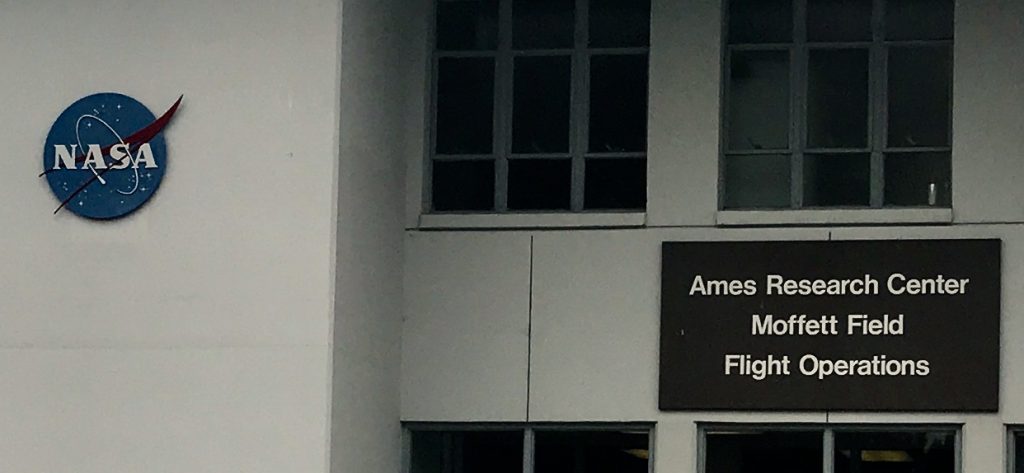
The Collings Foundation has taken on the mission of restoring and keeping a number of vintage WWII airplanes in airworthy condition, and taking them around the country on exhibition.

The money that they raise by charging for flights supports their restoration work. I decided to chip in and take Jack along with me on a B17 flight.
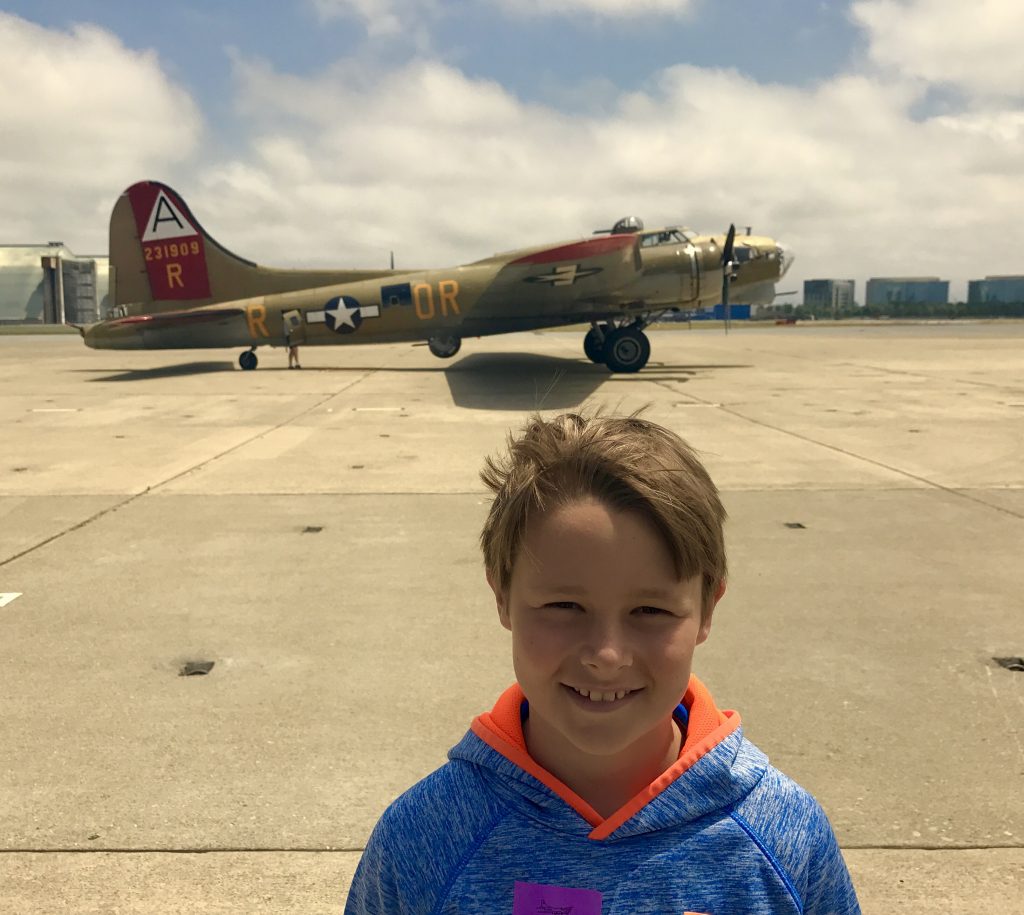
The B17 was one of the workhorse bombers that helped win the second World War. It was fast and durable, and dropped more bombs than any other bomber in WWII. More than 12,000 were made by Boeing. Just 7 are still airworthy, and having a chance to fly in one was a thrill.

The B17 had 12 .50 caliber machine guns to defend itself. This one is in the tail. Others stuck out from openings in the sides of the plane, and one ‘ball turret’ one popped out of the bottom of the fuselage. It’s hard to imagine crouching inside that one, turning it around 360° to fire at attackers.

There were other planes in operation there. A P51 Mustang fighter plane flew along to escort the bomber squadrons.

On the left is a B25 bomber.
P51Mustang from Mel Malinowski on Vimeo.
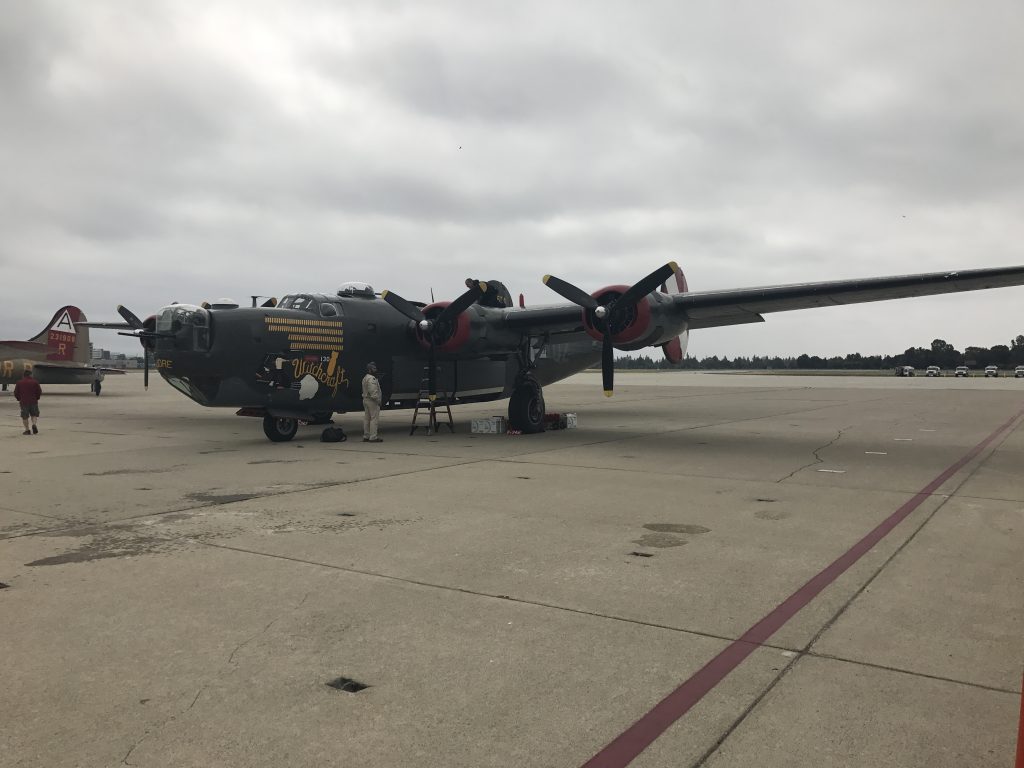
There also was a big old B24 bomber that survived 130 missions.

At last our turn to fly arrived, and we climbed into the rather small door. Ten people got to ride at one time. We all sat on the floor and buckled in for takeoff.
B17G Flying Fortress from Mel Malinowski on Vimeo.
And now, time for takeoff:
B17GTakeoff from Mel Malinowski on Vimeo.

Directly behind Jack’s head is one of the .50 caliber machine guns.
The inside of the plane was bare bones military. You could see the structural beams of the plane, and touch the thin aluminum skin. The control cables run exposed along the ceiling, and we were sternly instructed to not touch them!
Soon, the four powerful engines roared to life, and off we went! It was a loud and powerful experience, speeding down the runway and then lifting off. Soon we were soaring high above the salt ponds of the San Francisco Bay.
As soon as we were airborne, we were allowed to unbuckle and walk around the plane. As there was movement and occasional turbulence, we were warned to always hold on to something.
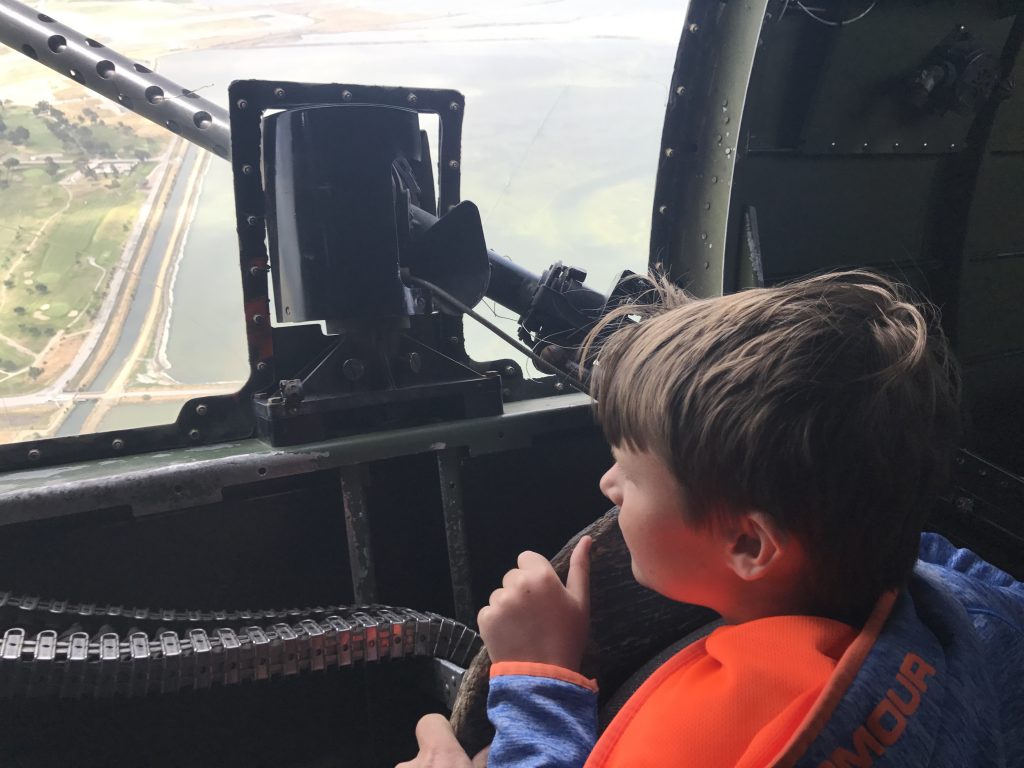
Jack is looking out through one of the machine gun openings. The large caliber bullets in long chains looked ominous. We were glad that we did not have to go out to shoot and be shot at by such as these.

If you were courageous enough to walk forward over the bomb bay doors on this little bridge past a rack of bombs (hopefully disarmed), you could enter the radio room. There, the ceiling was open to the sky. You could stick a hand or your head up, but the wind was fierce and you had to be careful. Hats, sunglasses and cameras have been sucked out in the 120 mph wind.
Further up, you could watch the pilots at work, as long as you did not distract them in this busy flight area.
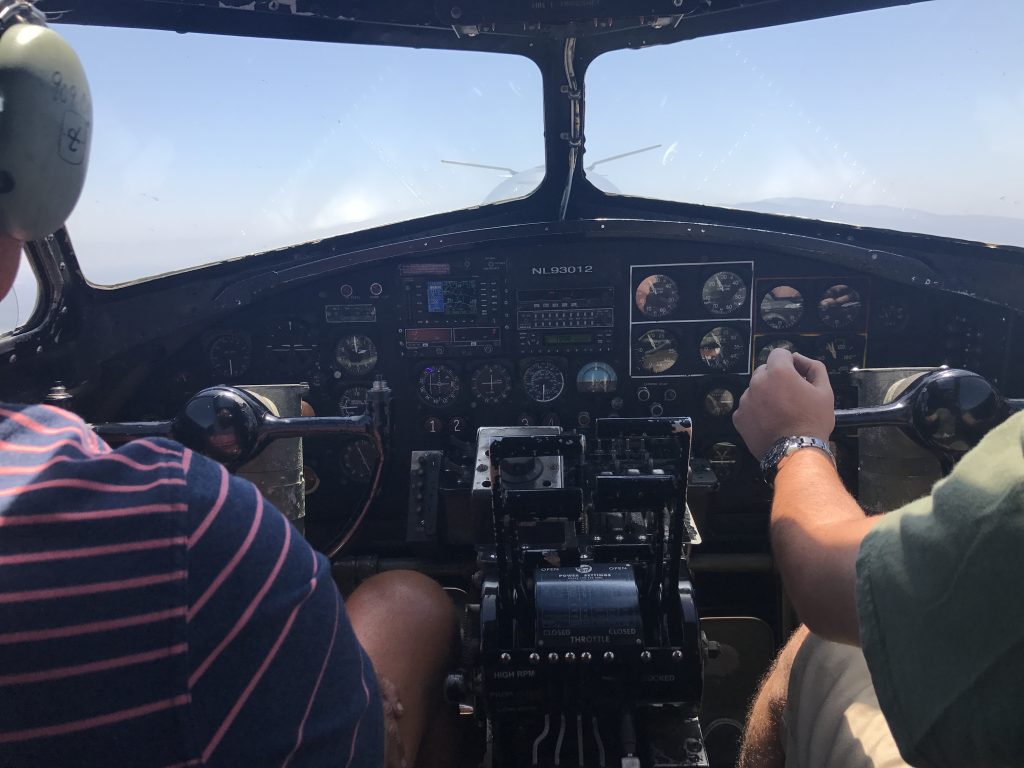
Below the cockpit and forward lay the bombardier’s cabin in the nose of the plane. There he sat, in a plexiglass bubble, with a better view than the pilots. From there he aimed at a target, and released the bombs at a precise time. It is a most impressive place to be if you enjoy heights and views.

Jack and I both went into this area. It was one of the highlights of the flight.
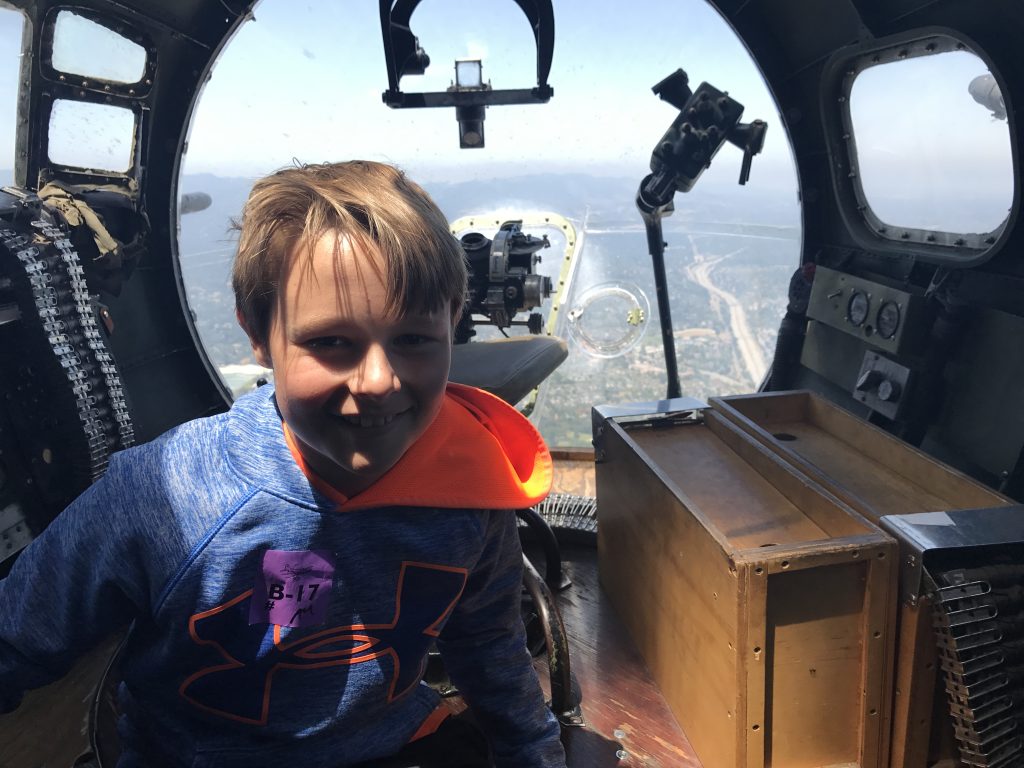
Those wooden boxes contained chains of .50 caliber bullets to feed the heavy machine guns.
This was a powerful experience, very unusual, and hard to explain. You felt the raw power of the aircraft, and also could feel a bit of what it must have been like to head off on a bombing mission in a fragile aluminum shell, knowing that your enemy would be firing bullets at you that would go through this shell (and you) like a knife through butter. It is a sobering experience, that though fascinating, does make you sense the seriousness and brutality of war. Jack’s comment on looking closely at the big bullets: “It’s sad that people can be this mean to each other.”
But, apart from that, it was a fabulous opportunity to fly in a vintage aircraft from 70 years ago. A great experience that brought us closer to the bare bones of aviation. In a passenger jet, you are in a cushy environment separated from the air rushing by at over 500 mph. Here, you felt it close to you, the power and the speed. Having just come off a month flying gliders in Arizona, it was a treat to experience another form of the flying that I have come to love. Being up there soaring with the hawks is always impressive.
B17GTaxiIn from Mel Malinowski on Vimeo.
Back on the ground 30 minutes later, we visited some other aircraft on display.
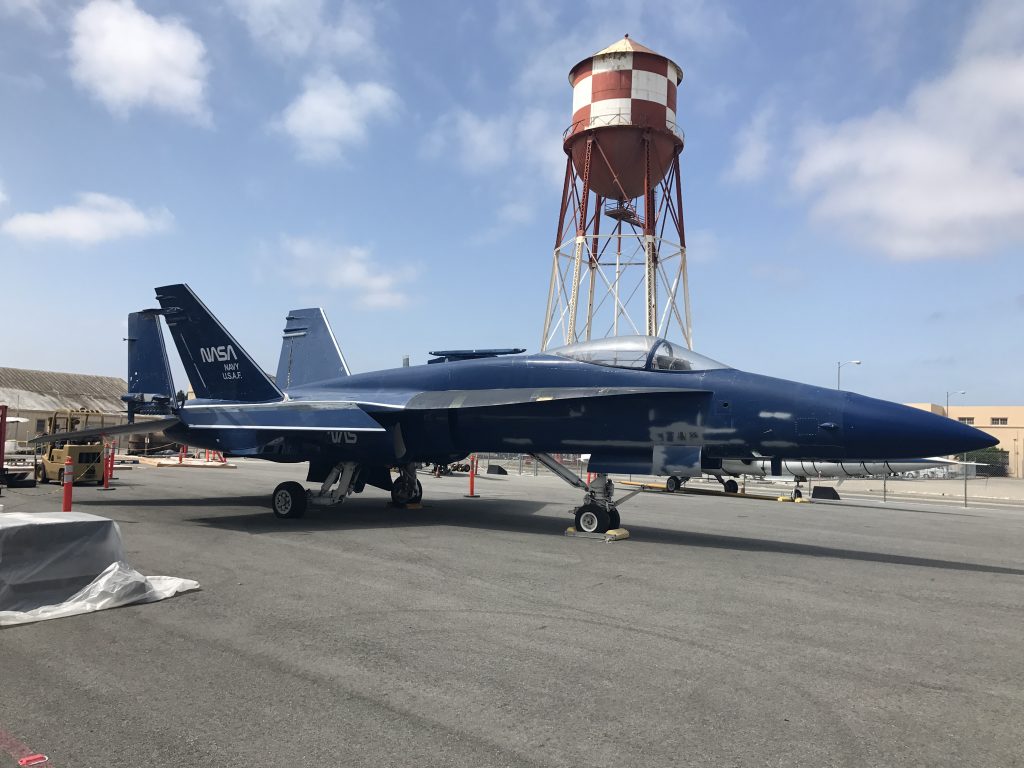
A fighter jet.

A Vietnam-era helicopter.

A spectator brought his vintage Russian sidecar motorcycle, a ‘Ural’
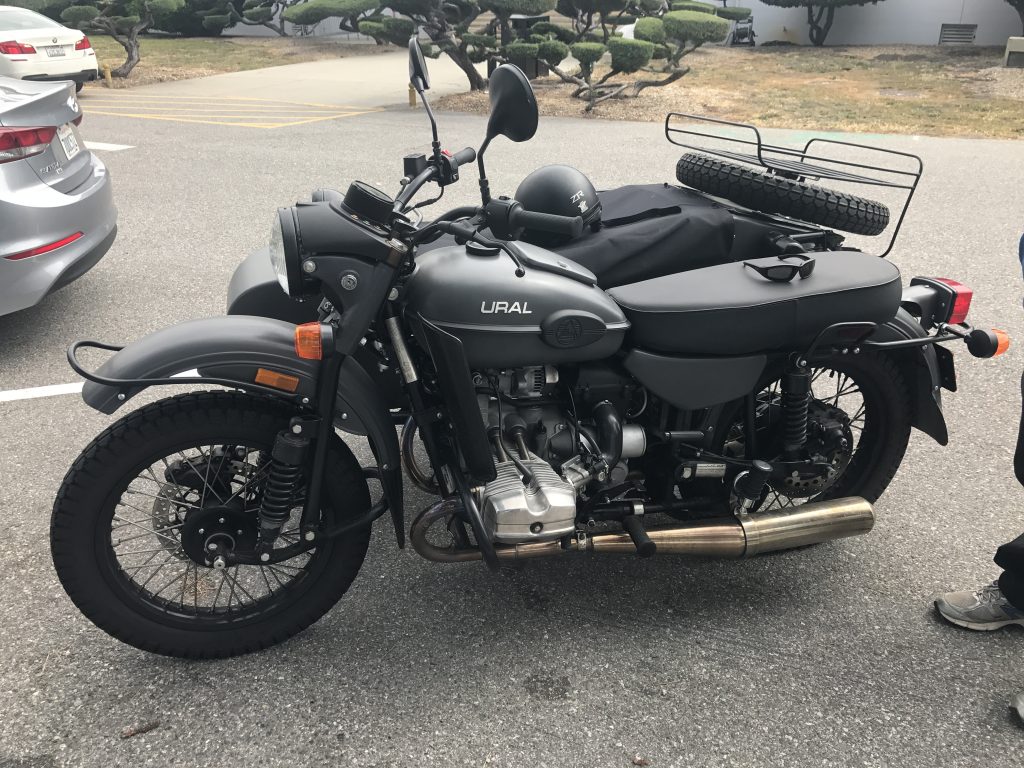
All in all, quite an adventure. I’m glad we made the effort and did this.

Leave a Reply
You must be logged in to post a comment.